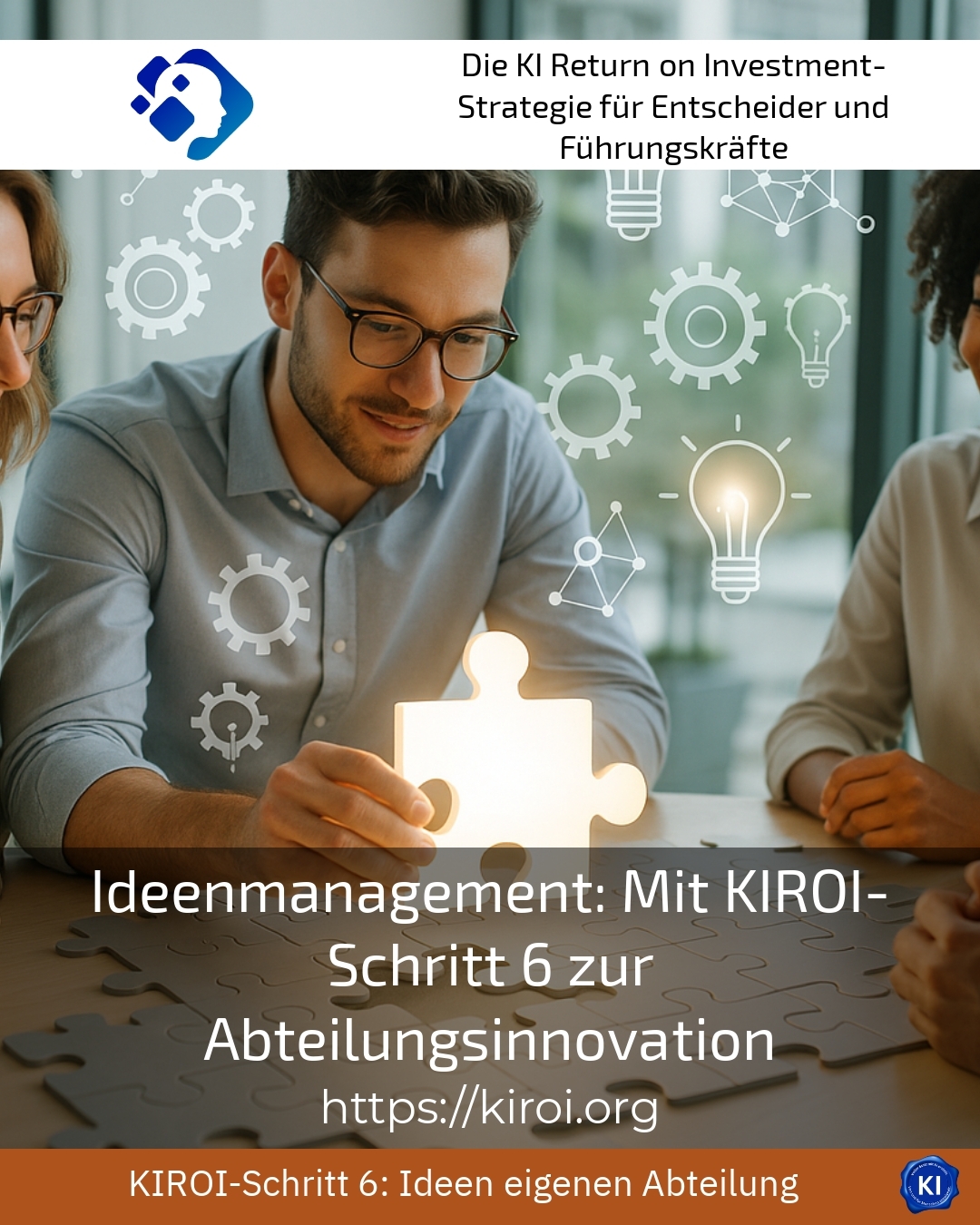Idea management plays a central role in modern companies when it comes to utilising the potential of all employees and driving innovation in a targeted manner. Many managers ask themselves how they can develop concrete improvements that have a lasting effect from the numerous ideas generated by their teams. A particularly structured approach in this context is KIROI Step 6: with a clear methodology, it is not only possible to collect ideas, but also to prioritise and consistently implement the best suggestions for your own department[2].
Idea management as a driver for departmental innovation
The targeted promotion of idea management helps companies to increase the capacity for innovation in individual departments. Many teams report that they gain new impetus through regular brainstorming and the use of digital tools. For example, an online portal where employees can submit suggestions for improvement at any time can significantly increase participation[7]. Transparent documentation of ideas also helps to maintain an overview and ensure that no important suggestions are overlooked. Feedback loops ensure that idea providers receive feedback and remain motivated to continue contributing.
BEST PRACTICE with a customer (name hidden due to NDA contract): An international service provider used KIROI Step 6 to specifically strengthen the innovative power of its HR department. As part of a workshop programme lasting several weeks, employees were invited to question digital recruitment processes. With the help of design thinking, new approaches were jointly developed to make the application process more attractive. The result was a digital matching tool that automatically compares job profiles and applicant profiles, thereby significantly reducing the recruitment effort. The use of clear criteria for evaluating and selecting the best ideas ensured that the proposals were not only innovative but also realisable in practice. The continuous support provided by transruptions coaching ensured that the changes were not experienced as a burden, but as a joint development step.
Step 6: From idea to implementation - how departmental innovation succeeds
KIROI Step 6 offers a structured framework for developing practical innovations from initial ideas. It is important that the submission of suggestions has a low threshold. Tools such as digital suggestion portals or regular innovation days ensure a continuous flow of ideas. Ideas are then evaluated according to defined criteria, such as the benefits for the department, feasibility and degree of innovation. The best ideas are then transferred to specific projects and allocated the necessary resources. An ongoing dialogue between team leaders and employees ensures that the changes are firmly anchored in everyday working life.
For example, a process manager can use KIROI Step 6 to analyse which processes in the logistics department can still be optimised. In a workshop, all those involved are invited to identify their daily challenges and develop solutions together. The best suggestions are then tested as prototypes before being introduced across the board. In this way, the entire department benefits from targeted improvements because the ideas do not remain abstract, but become tangible.
Another real-life example shows how the marketing department of a company uses KIROI Step 6 to develop new campaign concepts. Ideas are collected and evaluated together in short innovation sprints and the most promising approaches are tested directly on the target group. This reduces the risk of bad investments and ensures a high level of acceptance within the team because everyone involved is involved in the process.
BEST PRACTICE with a customer (name hidden due to NDA contract): In a manufacturing company, KIROI Step 6 was used to specifically involve the production department in the innovation process. A digital whiteboard made it possible to collect suggestions for improvement on an ongoing basis. The approach of holding regular reflection sessions on current work processes together with transruptions coaching was particularly successful. In this way, employees identified recurring bottlenecks, for which they jointly developed ideas for solutions. The implementation of the best suggestions was accompanied by transparent monitoring and the results were presented to the team on a monthly basis. The willingness to innovate increased significantly because employees realised that their ideas were being taken seriously and implemented quickly.















